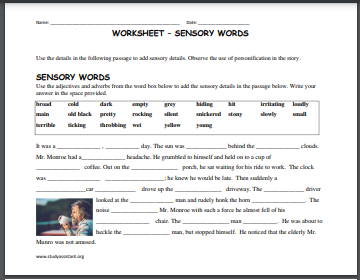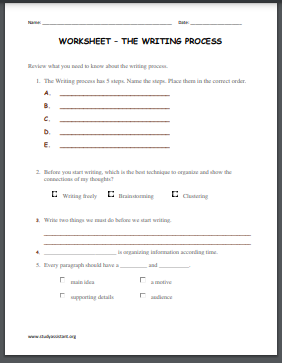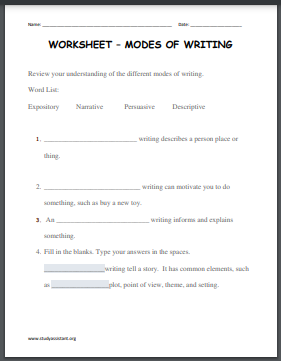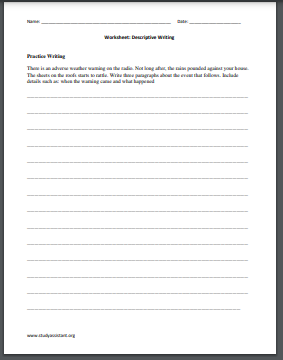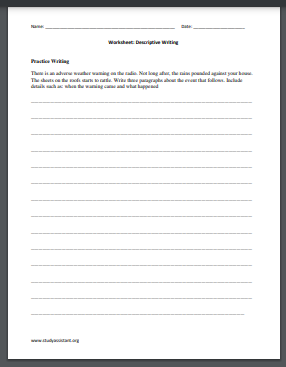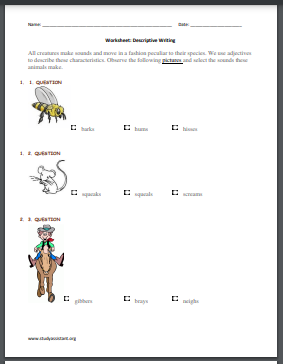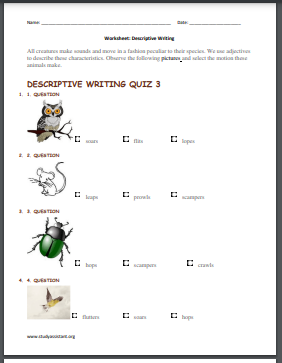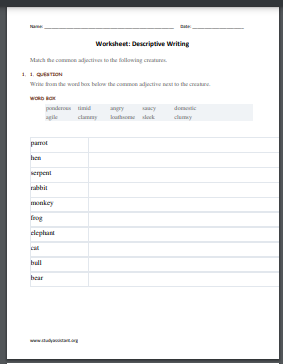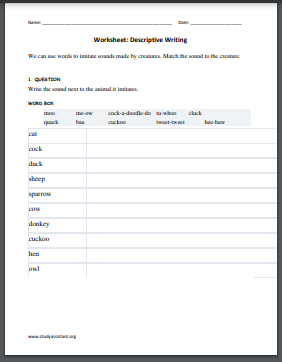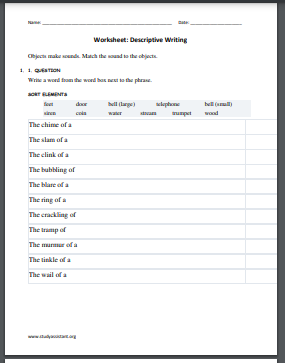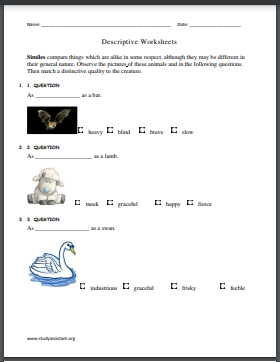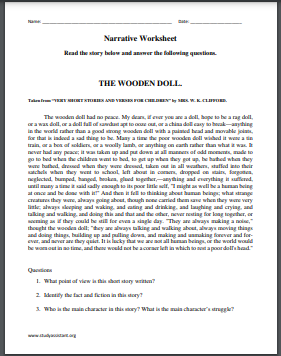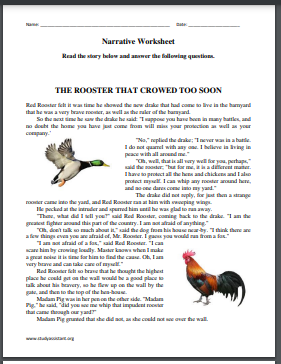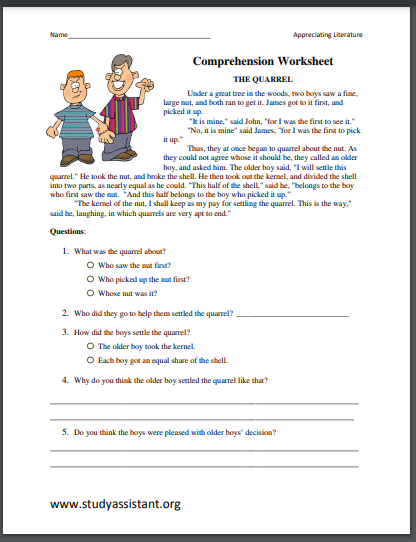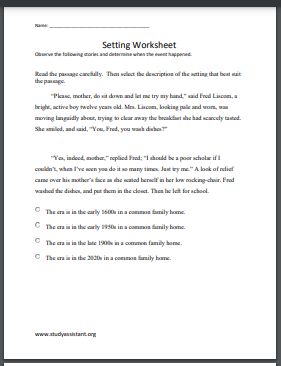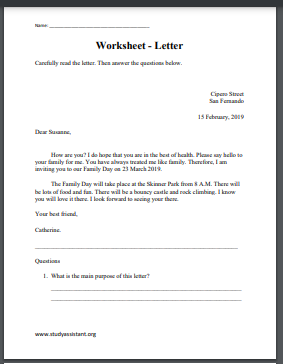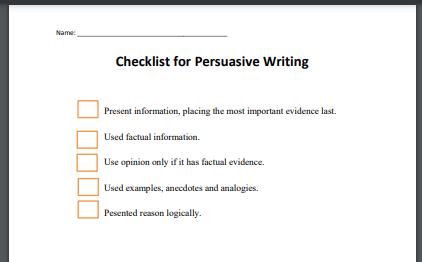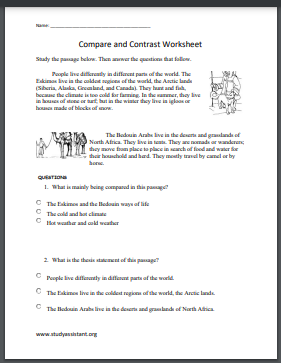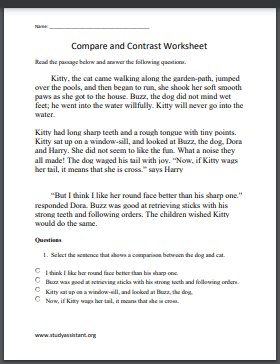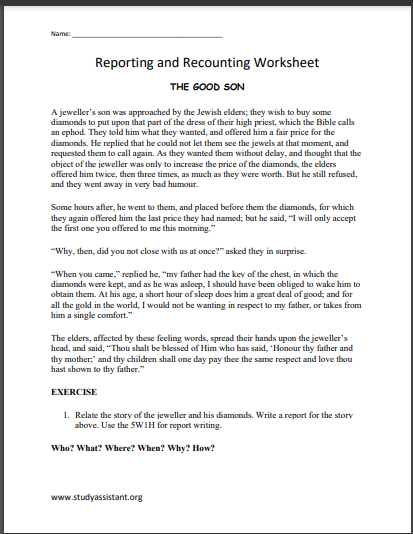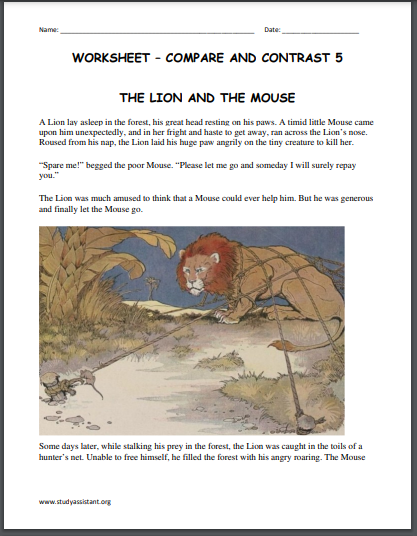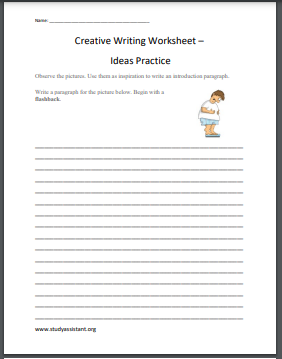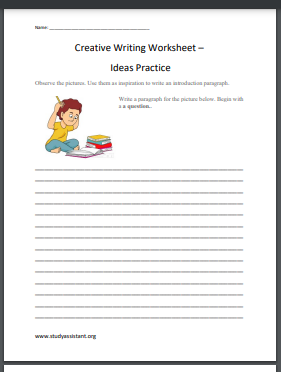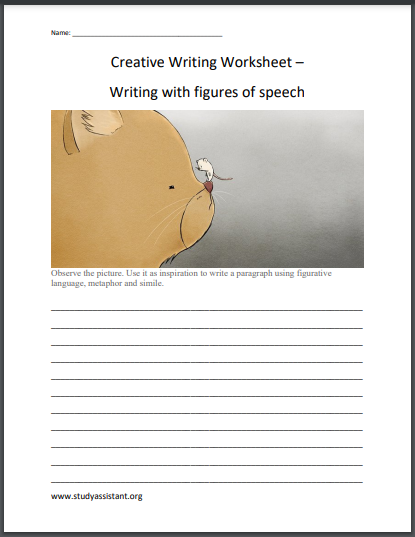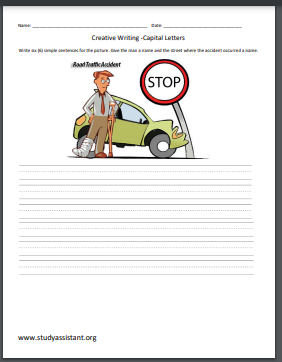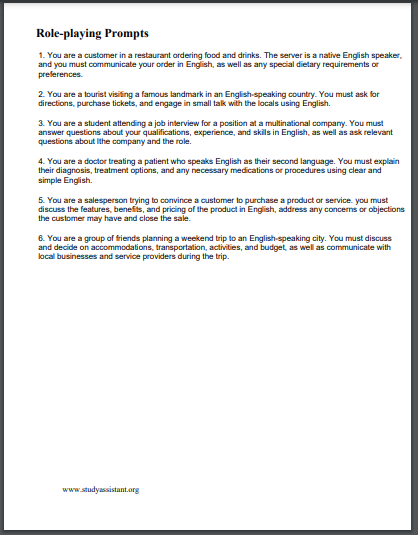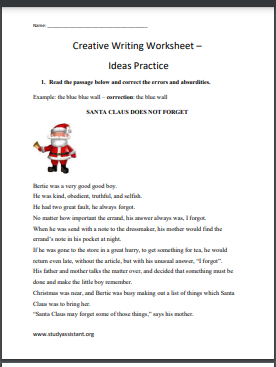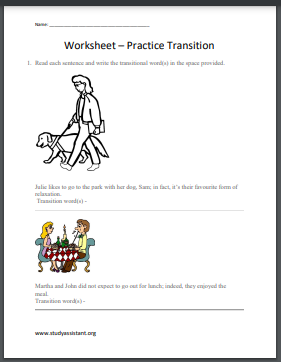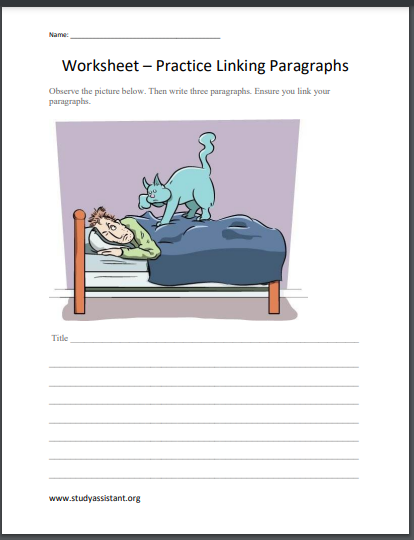We are required to use our mind in writing so our expressed ideas are easily understood. When we write we do this with a purpose; it could be to inform, persuade, entertain, explain, narrate or to describe something. Sometimes the writing could be more than one purpose – but the primary purpose should not be ignored. Here are more creative writing worksheets which can help you write better.
Contents
Modes of Writing
Sensory Words: Use the details in the passage to add sensory details. Grades 4-6
The Writing Process: Review what you need to know about the writing process. Grade 3-6
Modes of Writing: Review your understanding of the different modes of writing. Grades 3-6
Descriptive Writing
Descriptive Exercise 1. Write three paragraphs about an adverse weather condition. Grades 5-7
Descriptive Exercise: Practice writing a descriptive exercise.
Descriptive Exercise 3: -Observe characteristics of animals and select their sounds. Grade 1-2
Descriptive Exercise 4: Observe the following pictures and select the motion animals make. Grades 1-2
Descriptive Exercise 5 – Match the common adjectives to creatures. Grades 2-3
Descriptive Exercise 8: Objects make sounds. Match the sound to the objects. Grades 2-3
Descriptive Exercise 9: Match the sound to a sentence that indicates the cause of the sound. Grades 2-3
Descriptive Exercise 10: Observe pictures of animals and match it to a distinctive quality. Grades 1-3
Narrative Writing
The Wooden Doll: A short story with questions. Grades 3-5
The mirror’s dream: Read the story and analyze the narrative. Grades 4-6
Tearful – Read the story and analyze the narrative. Grades 4-6
The rooster that crowed too soon – Read the story and analyze the narative. Grades 4-6
Lazy Gray – Read story, answer questions, and analyze the narrative. Grades 4-6
The Quarrel – This is a guided exercise.Grades 2-3
The Friends – Analyze characters and determine their actions. Grades 2-3
Setting – Read the passage carefully and select the best description for the setting. Grade 3
Narrative Story Event -Write a story about the events which followed. Grades 3-5
Persuasive Writing
The Invitation – Examine the invitation and its persuasive message. Then answer the questions. Grades 4-5
Letter – Carefully read the letter. Then answer the questions below. Grades 4-5
Checklist for Persuasive writing – Interactive Checklist. Evaluate your persuasive writing with this checklist.
Advertisement – Read the advertisement and answer questions. Grades 4-6
Expository Writing
Compare and Contrast – Here are some simple compare and contrast passages and questions. Grades 3-5
The Terrifying Experience – A simple short story and questions (compare and contrast). Grade 4
Compare and contrast 3 – Study the passage and answer the questions. Grades 4-5
Cats and dogs. Simple passage about a cat and dog. Questions followed. Grades 1-3
Reporting and Recounting. Guided passage to complete a report of an accident at a swiming pool. Grades 5
Report on the Good son. Passage to read. Questions follow. Grades 5-6
The Lion. Passage to read. Questions follow. Grade 6
Building skills Practices
Ideas Practice 1. Observe the pictures. Use as inspiration to write an introduction paragraph. Grades 3-6
Ideas Practice 2. Observe the pictures. Use as inspiration to write a paragraph. Grades 3-6
Ideas Practice 3. Observe picture and use it as inspiration to write a paragraph using figurative language such as metaphor and simile. Grades 3-6
Ideas Practice 4. Observe the pictures and use them as inspiration to write an introduction paragraph by setting the scene or creating an atmosphere. Grades 2-6
Essay Writing. Suggest the following opening and complete the essay. Grades 3-6
Ideas Practice 5. Read the passage below and correct the errors and absurdities. Grades 5-6
Transitions. Read each sentence and write the transitional word(s) in the space provided. Grades 5-6
Linking paragraphs. Observe the picture then write three paragraphs. Ensure you link your paragraphs. Grades 5-6

